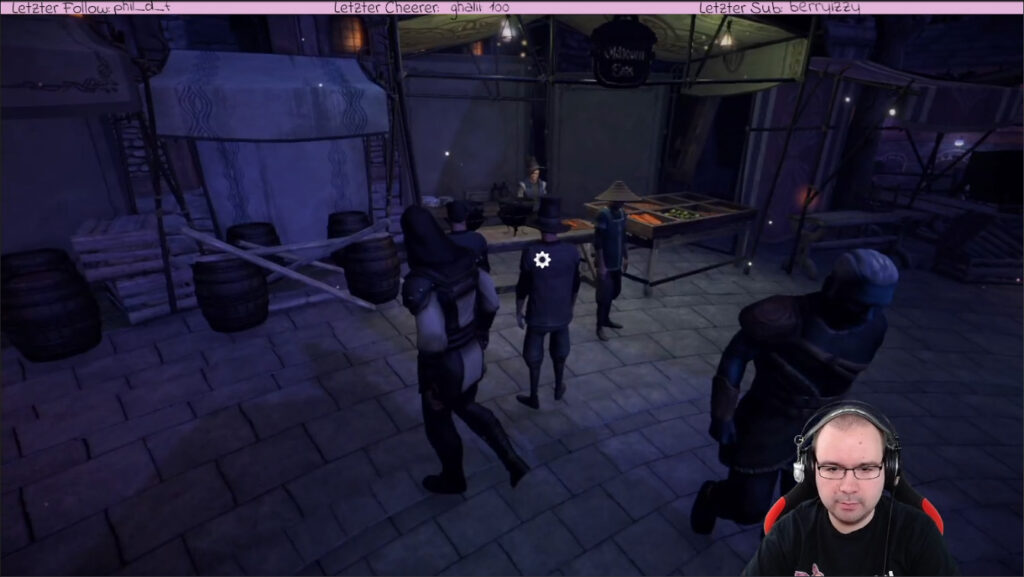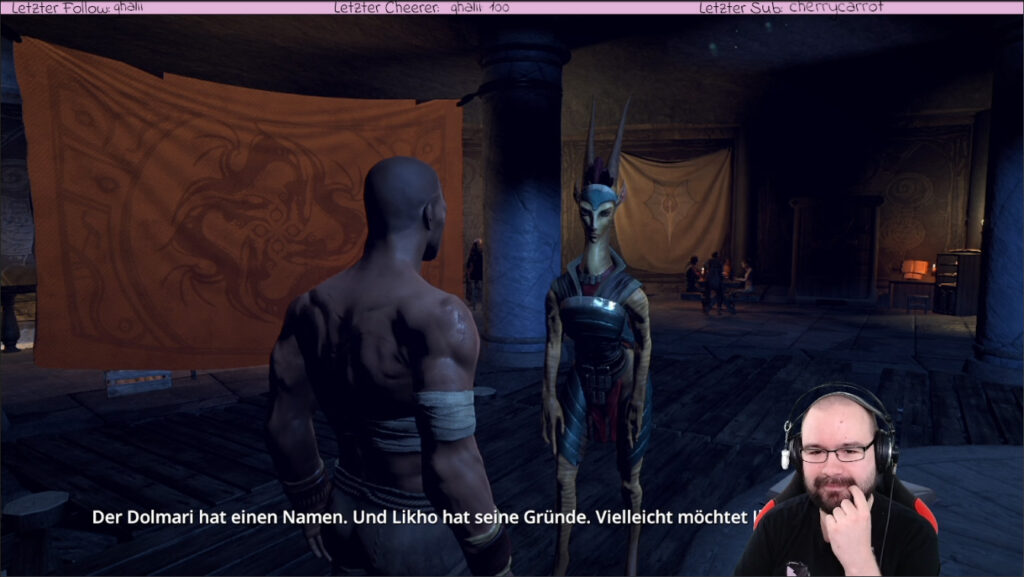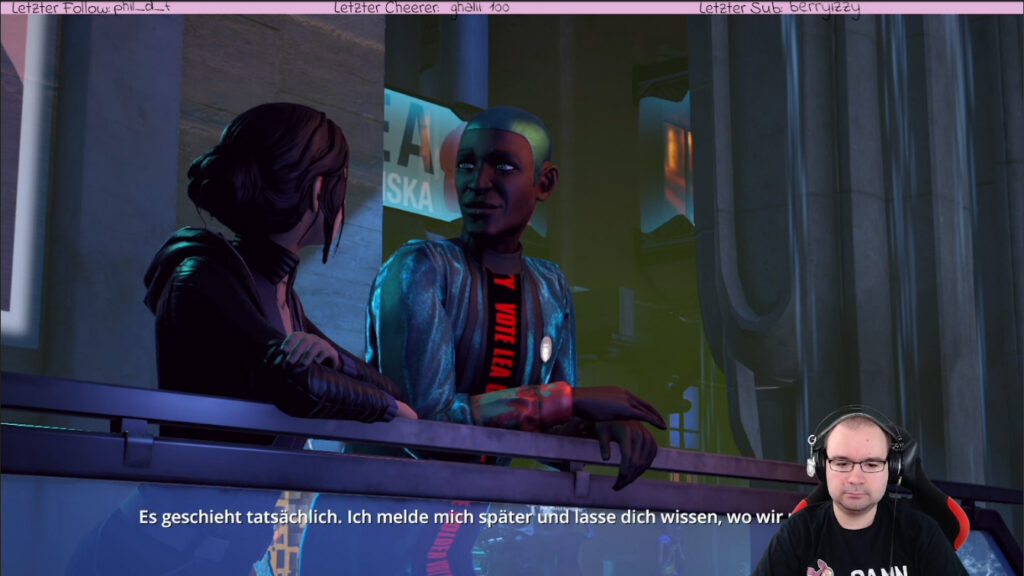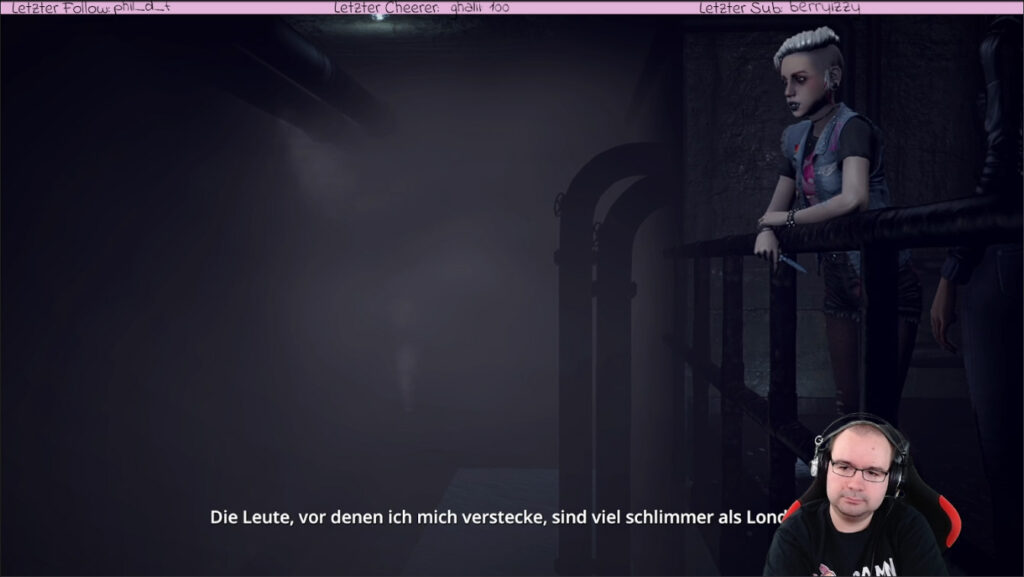Today we will talk about the third part of the “The Longest Journey” series (parts one and two are of course also available). We end the small detour into the so-called “Dreamfall saga”, which revolves around Zoë Castillo – and there is another genre change. Can the game convince us? Let’s find out!
Like the two previous ones, this article will be as spoiler-free as possible, but also a little shorter. Because all in all, not too much has changed compared to its predecessor – still enough for me to say that it’s a new genre (or at least a significant expansion of the old one) though.

But let’s start with the similarities: the game is again a 3D adventure for which the control with the gamepad turned out to be the best. We’re playing three people again – you can only find out who they are in the VOD or when you play it yourself. There are also these interesting changes of perspective here, which I was so enthusiastic about in the first part and which give the characters more depth. I thought it was nice that the developers kept that.
The game also offers an extensive and interesting story with a lot of background information about the story, the events since the last part and the people we already know and those we still meet. We also meet old acquaintances from the previous parts and visit places again – but this time the effect is not as strong as when switching from the first to the second part.

I’d like to go into this briefly, since it was too short in the last post: since “The Longest Journey” was a 2D game and only had one fixed perspective for each scene, the sequel could easily add new passages and elements by switching to 3D – the explanation was always that they were simply covered by something else beforehand. I think it’s a simple but very good trick to make well-known places exciting to explore again. Of course, this trick could not be used now – the time difference between the parts was now used, but of course it had its limits.
What I don’t want to get into too much is the story itself; anything I would write here would spoil the previous part. But I can say that I found the story to be a nice conclusion to the saga. Although sometimes a bit long-winded and again with small detail errors in the continuity, I found it very exciting and entertaining when playing – I would definitely have regretted not having played the part!

Long-winded is a good keyword to switch to the differences now. A major change was again the reduction in puzzle elements. There were far fewer items to collect and even fewer situations where you needed to combine them. You had to think mainly because of the environment – for example, sneak passages and labyrinths would be mentioned here, as well as simply looking for switches and levers. But this also had to do with the change of genre.
In fact, “Dreamfall Chapters” became exactly what the title suggests: a chapter-based game divided into five “books”. These were originally released one after the other, but I had the “Final Cut” and was able to play them all one after the other. But there was one more change: the game became more of a “graphic adventure”, something that is also known as a “walking simulator”. Just think of games like “Life is Strange” and “The Wolf Among Us“, that’s the genre I’m talking about.

Just like those games, there was also a choice mechanic, and just like in “The Wolf Among Us” and very different from “Life is Strange”, these choices were often difficult and had noticeable consequences for the later game – sometimes in complex combinations , where three decisions simultaneously affected further progress. There were even decisions that could end the game immediately – but luckily not too many of them.
At the end of each book, the decisions made were then listed and placed in relation to the decisions of other players. In addition, it was directly shown when a decision would have consequences (only named with the chapter, not with a spoiler of the consequence itself). I found that very interesting, because in the corresponding books one paid even more attention to the effects that a (seemingly) small decision could have. I also felt that all the consequences of my actions were reasonable and not forced.

Overall, I was very enthusiastic about this game, but there was one point that could have been communicated better: the game refers to points from the predecessors in many places, but especially to the first part. However, this game is marketed as independent and playable without prior knowledge – I find that unfortunate. It wasn’t a problem for me, I knew all the games in the series. For casual gamers, however, this could mean frustration if you don’t know the other parts.

This concludes the “The Longest Journey” series. There were probably plans to release another part of the main saga, but nothing has come of it so far. I would be very happy if something came up again, because the game enthused me above all because of the extensive, complex, but above all exciting world, which I would like to see more of. So let’s hope the series hasn’t been abandoned yet – I’m definitely a fan!
How did you like the game? Did you like it What do you think of the saga overall? Have you played the games yourself or are you still planning to experience the adventure yourself? Feel free to join the discussion on Discord!